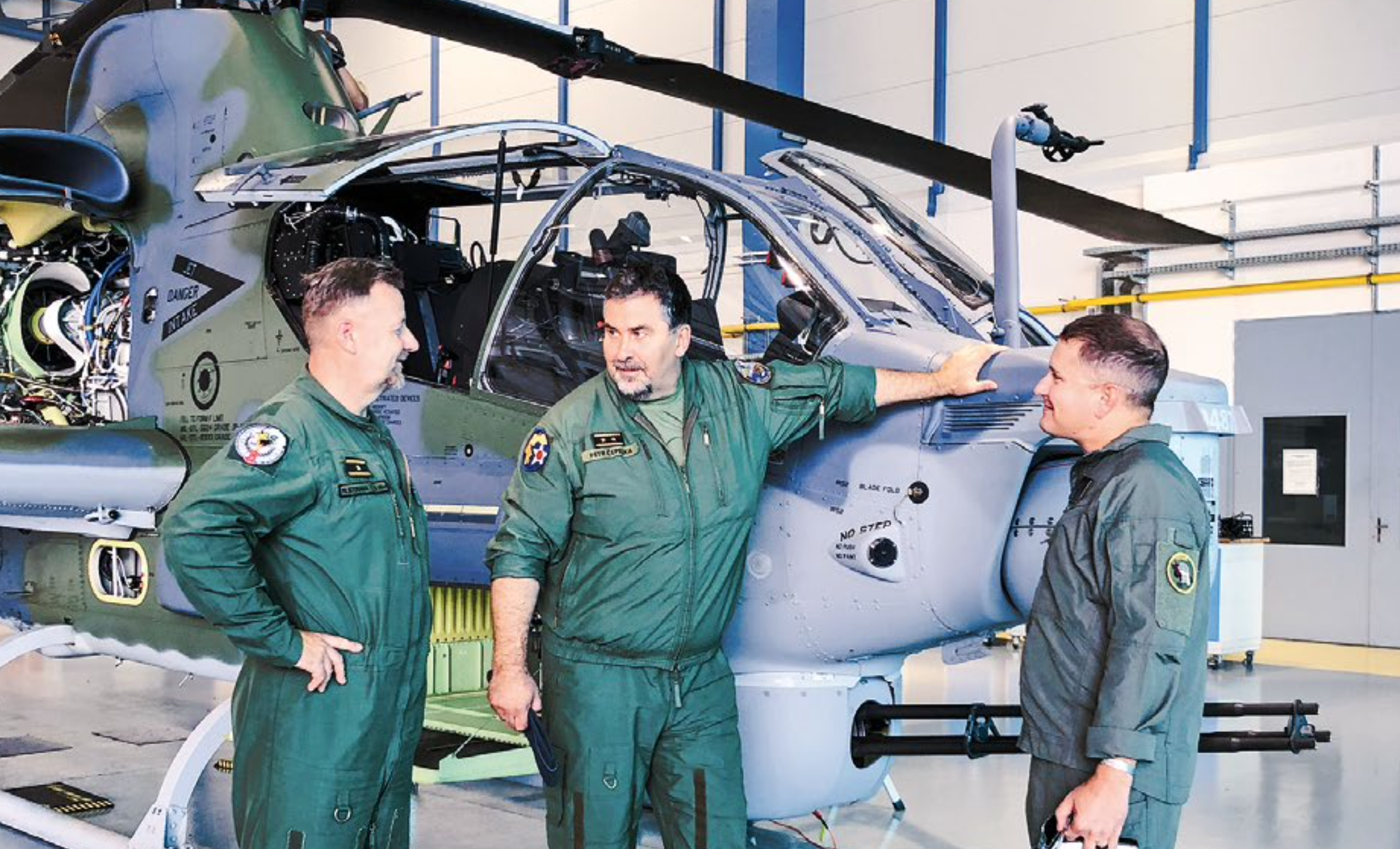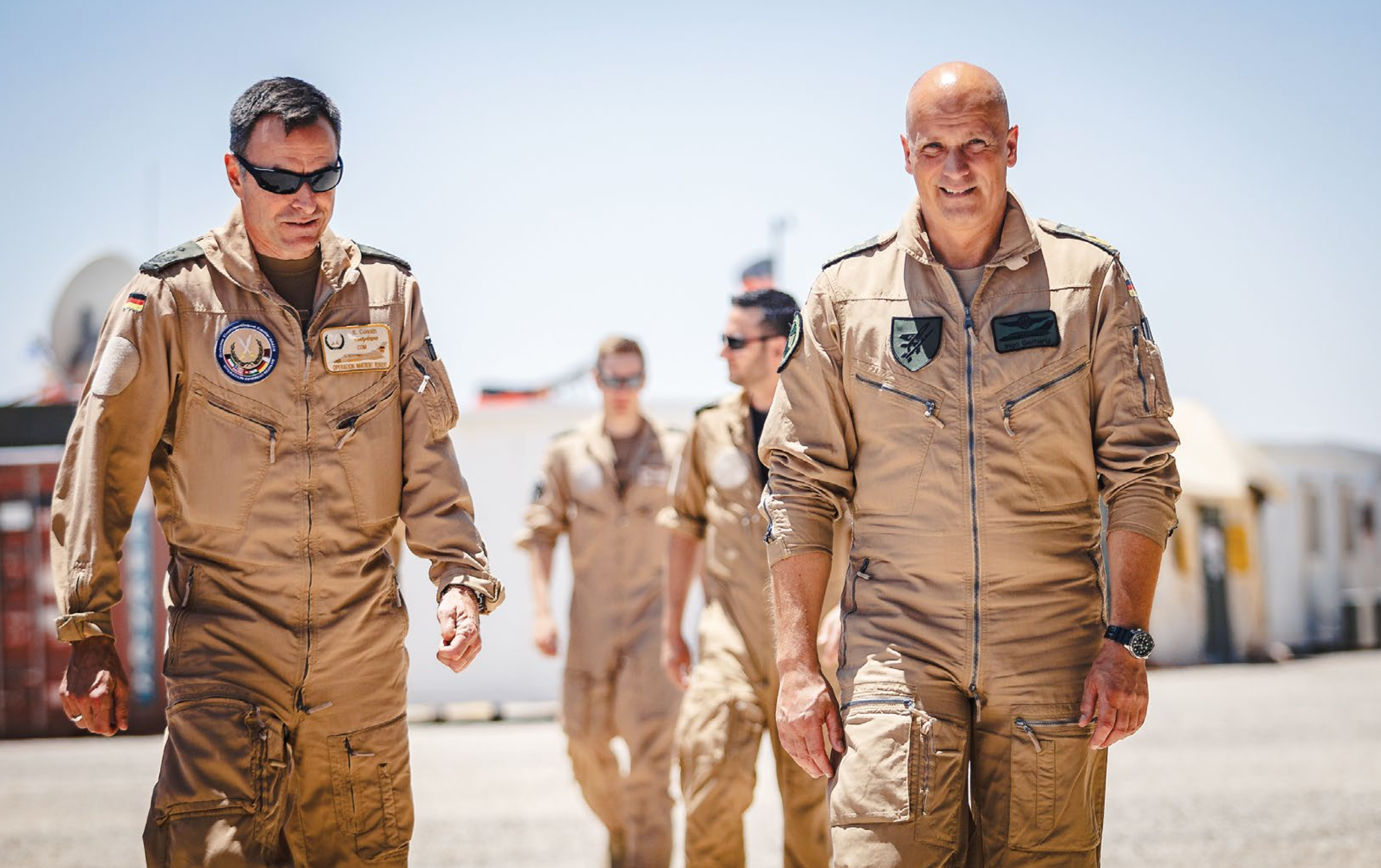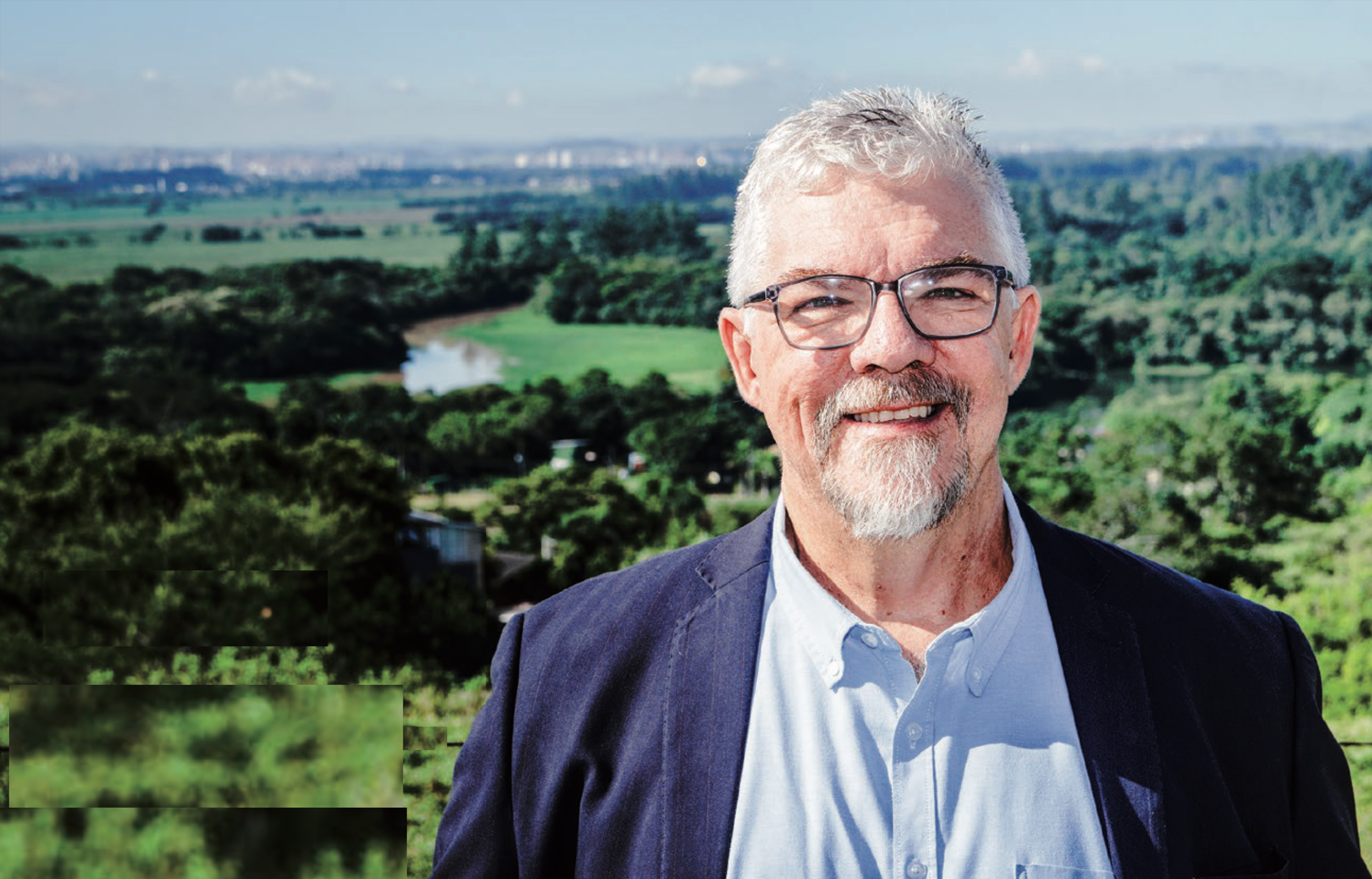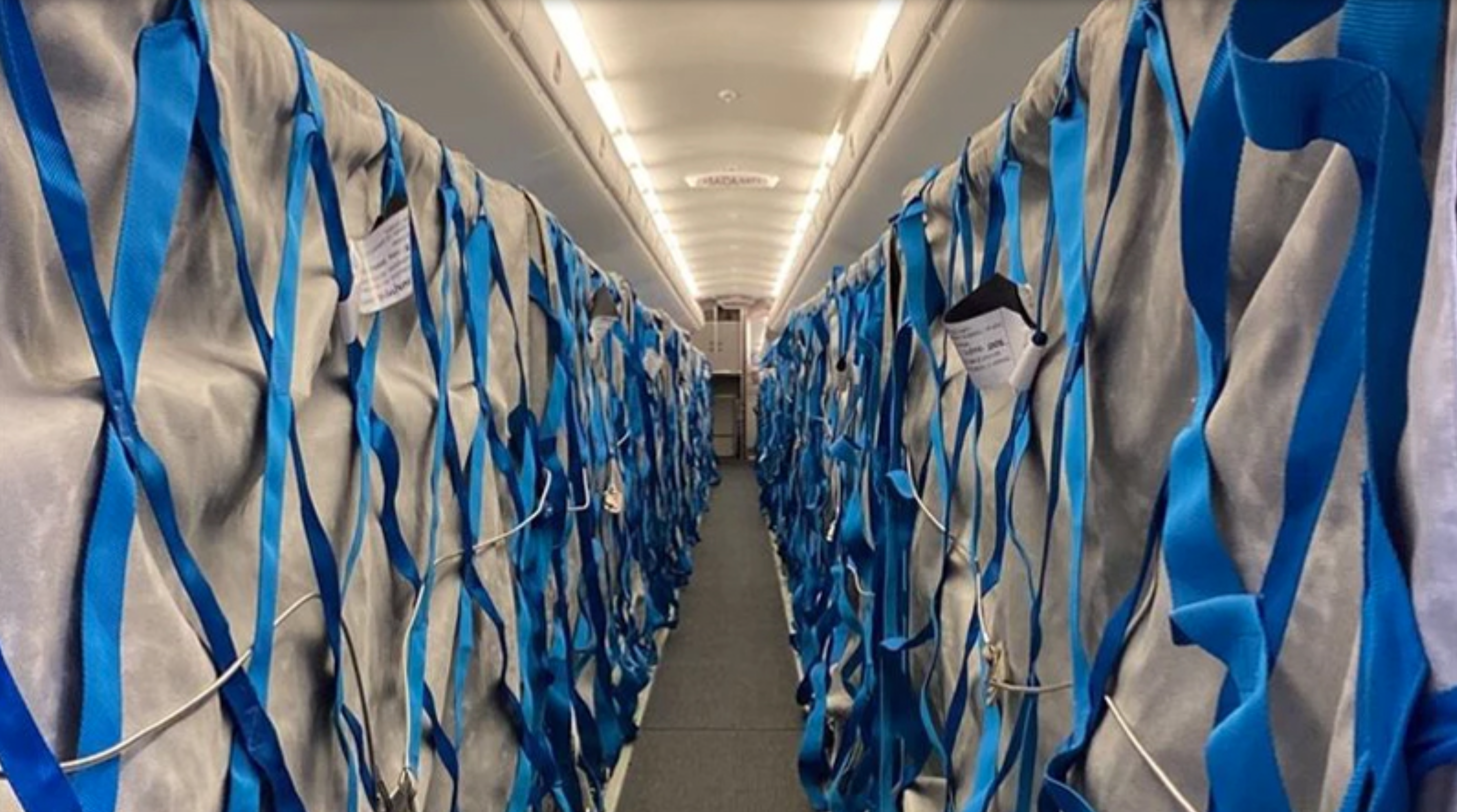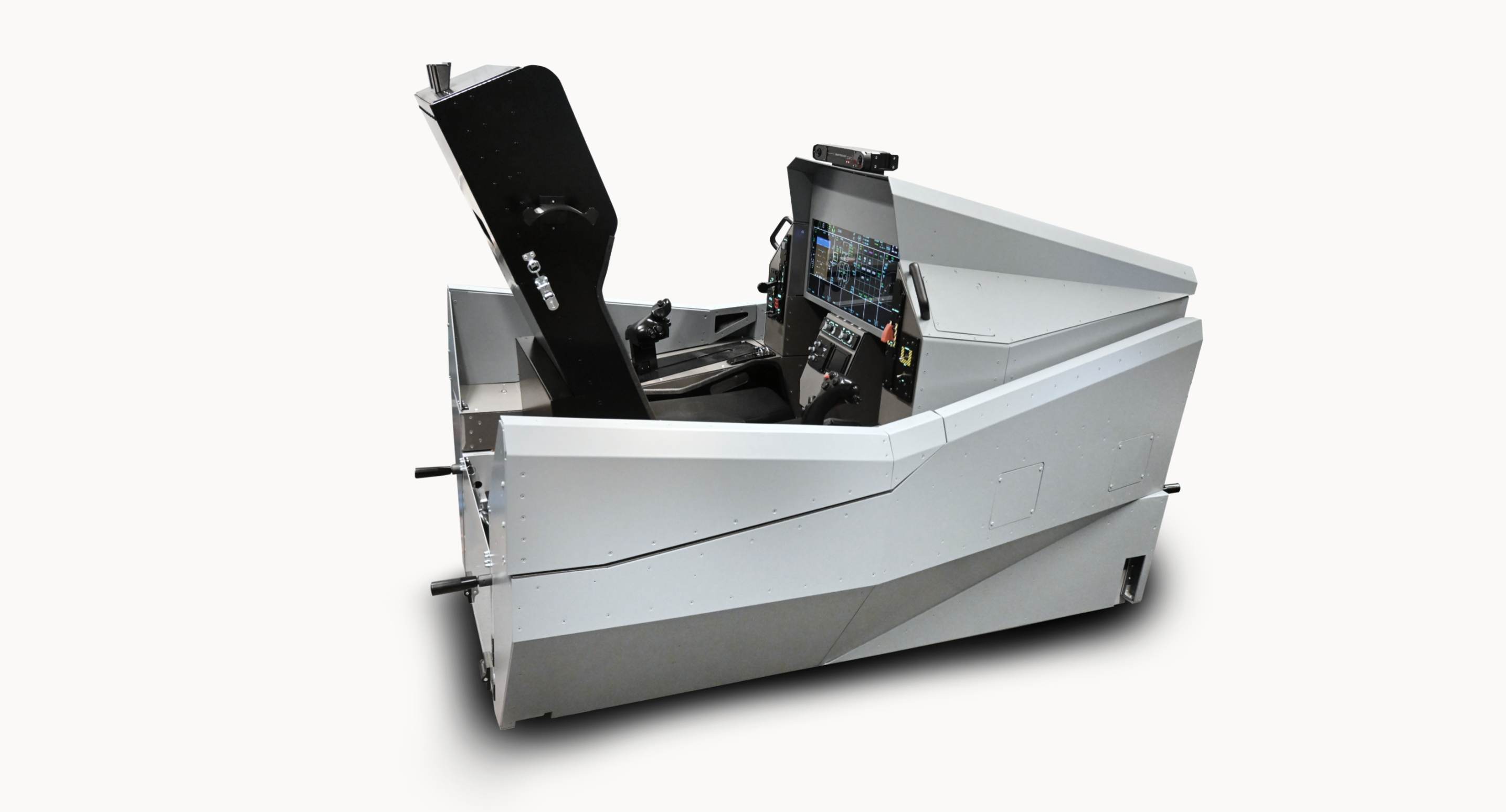Unmanned aerial vehicles are frequently considered a game changer in the aviation industry. It is not only because of their ability of autonomous flight, but also because they redefine the aviation industry’s map. While the manned planes market is more or less dominated by only a dozen countries with a longstanding aviation tradition, the UAVs are primarily sold by the USA and two new suppliers – China and Turkey.
And although the Czech Republic did not reach a major world UAV market share, it definitely has a long-term tradition in the works.
Probably the very first resource-supported idea to produce a functional unmanned aerial vehicle, not taking the amateur constructions and many popular models into consideration, was developed at the Antonín Zápotocký´s Military academy (VAAZ) in Brno in the early 1980s. Some of the university’s experts together with students managed to persuade the Ministry of National Defence officials that such a step is necessary to keep up with other developed countries, where the UAVs were entering serial service and even gaining combat experience. The realisation of the plan was proposed and later accepted by the VAAZ modellers club, while the creation of some of the more advanced systems, such as the control system, was entrusted to the professionals of the VÚ 030 Air force research institute, nowadays called VTÚLaPVO. The very first Czechoslovak UAV was finished in August 1981. A small plane with a 3.4m wingspan and topplane scheme was powered by a STIHL 051 chainsaw combustion engine. The experience of the modellers was reflected in the selection of the building materials – primarily balsa wood, plywood and wood. The plane was named RuBl and although the same word is used for the Russian – and back then Soviet – currency, it was referring to the names of its designers – Rumrajch and Blažíček. The command system was taken from the RC model. Although it was the very first UAV, it did fly well and the later version, an enlarged E-50 model, was made in two prototypes (E-50/1 and E-50/2), both with 50 kg maximum take off weight. Later, the E-60 model with a pusher propeller and 60 kg MTOW was completed. The latter type was a preview of the engineers´ idea of building a reconnaissance and surveillance UAV able to carry sensors. For them, the pusher propeller concept was ideal due to the possibility to install the sensors in the front fuselage section with an unobstructed view and no risk of sensor lenses soiling from the engine oil, exhaust smoke, etc. The final E-50/3 prototype was equipped with fibreglass wings and fuselage, although the wing construction still relied on wood as the building material. Indeed, small pioneering steps, but the UAVs were flying and this paved the way for further development and gained the authorities´ acknowledgement of the UAV sphere progress.

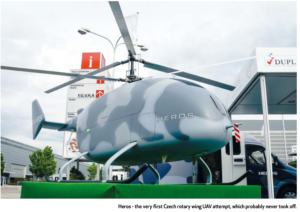
Jay bird, or Sojka in Czech
During the spring of 1983, the E-50/3 prototype was successfully test flown. Although the flight characteristics were very pleasing, the take-off left much to be desired. The delays in the command inputs performance, gradually growing with the increasing distance from the control station, made it very difficult to achieve a satisfactory level of take-off accuracy. As a solution, the engineers decided to use the catapult launch of the vehicle with a launching rail installed on an Avia light truck. The take-off speed of some 80 km/h was achieved with an ejection gun, but an even more sophisticated solution was in the pipeline. Together with the army ammunition research institute VÚ 010 and Konštrukta Trenčín R&D facility, a new rocket engine called BOLID was constructed. Obviously, the launching system was entirely rebuilt and then newly installed on the legendary Praga V3S light truck, capable of driving evenly in any terrain. The launching rail was foldable for easy transportation. Unfortunately, the very first live rocket-propelled launch turned into a crash. Although the rocket engine worked perfectly, the jet efflux blew the plane stabiliser away and the uncontrollable plane crashed after a few seconds. As an immediate solution, the stabiliser was relocated to the upper position. The updated prototype, repaired and modified after the hard landing, flew well and the Ministry of National Defence agreed to a continuous support of the project research. Two more prototypes, E-50/4 and E-50/5 were built, this time with an AFA-39 photo camera and meteorological sensor in the nose. Unfortunately, further development was later ceased due to lack of interest on the side of the potential user – the Czechoslovak Army. The UAV team decided to fight for its achievement and managed to get a permission for a continuous development of another UAV application – a target drone. One of the UAVs, newly named Sojka-V, where the V stands for Výzkumný (Research), appeared for the first time. It was flight tested “against” the Mi-24V over the Prostějov airport and the military area of Hradiště and Malacky. And the tiny UAV did well, with the helicopter WSOs having serious difficulties to acquire and shoot down the small and slow target. To cope with requirements for advanced manoeuvres, the drone was built from composite materials with a more powerful engine and control system. The autopilot was introduced for the first time and a recovery parachute was also installed. A scaled-down 1:4 model was even tested in the aerodynamic tunnel. The Sojka UAV gained a significant attention of the Hungarian military technical institute and both organisations created a new model called Sojka III/TV, equipped with a more powerful engine and a TV day camera. The new launching platform, installed on a Tatra 815 4×4 truck, allowed for a difficult terrain movement control and in 1995 the plane entered military trials. Subsequently a night-capable variant Sojka III/TV with thermal camera was introduced. The Sojka UAV was adopted by the Czech Army in 2000 and served for about 10 years. The Sojka III/TVM3.12 was even fully compliant with the NATO standards. With the capability to fly up to 200 km from the control station with 4,000 m ceiling and 5 hours endurance, it was comparable to many foreign projects. Later, around 2008, a new generation UAV called Manta (full system including ground control station and pneumatic catapult was called Mamok) was introduced by the VTÚLaPVO in a cooperation with the Aveko company. The project was co-funded by the grant support of the Ministry of Industry and Trade. The plane of similar concept with Kevlar and carbon composites as main materials unfortunately did not exceed the prototype stage. The VZLÚ then produced a few more micro and mini UAVs, including rotorcraft Makak system, multicopter BRUS, fixed wing Optoelektron and others. Some of them, such as BRUS, even entered in small quantity into the Czech Police service. Other projects, such as small target drones, were even deployed during live rocket firing.
The new era
The end of the millennium marked the launch of several commercial UAV projects. There were some development projects as well as some sales attempts. Based on a NA 40 Bongo ultralight helicopter, a project of its unmanned variant was prepared, but it was never fully realised. The Aviation institute of the Faculty of mechanical engineering at the VUT university built a lowplane Marabu aircraft in a manned variant, which was intended to be later tested in an unmanned variant as well. During the NATO Days of 2008, another VTOL UAV was presented – a coaxial rotorcraft called Heros, made by Track Systems company. Although it starred at the event and was later also presented at IDET 2009 and at the Moscow MAKS airshow, it sadly never took off. The manufacturer had a very high ambition to certify the rotorcraft in compliance with EASA CS-VLR standards. Unfortunately, the project was cancelled a few years later.
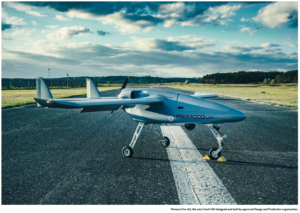
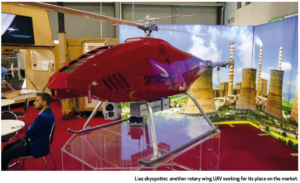
In 2013, the development of a new rotorcraft UAV was initiated in a company previously associated with trucks, a Liberec-based Modelárna LIAZ. The final product, a 150 kg MTOW LIAZ Skyspotter 150A, was officially unveiled a few years later with a strong resemblance to the Belarusian Indela rotorcraft, although the company never officially made a comment about this likeness. Skyspotter was displayed multiple times with mock-ups of various sensors and only very little specific information is available. Another project was launched in Staré Město, a Cantas VTOL delta-wing platform, originally backed up by the CSG consortium. Nevertheless, in 2020 the sponsor pulled the plug and the ambitious type full flight envelope is yet to be completed.
In 2015, the latest Czech UAV was test flown for the first time, a fixed wing type One 100 of Prague-based company Primoco. The type was also publicly displayed several times and according to official information it has already been delivered to several countries, including Burkina Faso and Malaysia. The 150 kg MTOW plane also set several world records including a 15-hour endurance flight or the very first police BVLOS flight with an approximately 70km distance from the control station while deployed with the Czech Police during border control missions. Another first was gained when the Primoco One 150 advanced model was controlled remotely over more than 9,000 km. The company streamed several videos of live use of specific sensors and back in 2020 it was recognized by the Military Aviation Authority of the Czech Republic as the very first Czech design and production organisation. Only three other companies worldwide hold a similar certification compliant with EMAR 21 rules. The company also operates its own airfield at Písek and the One 150 type is the very first Czech UAV officially confirmed to have been exported abroad.
Text: Jakub Fojtík, Ph.D., LL.M.
Photo: author, VTÚLaPVO

